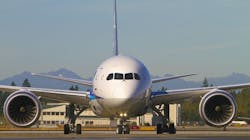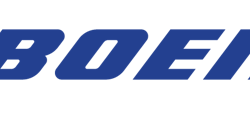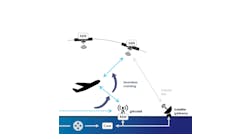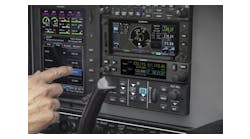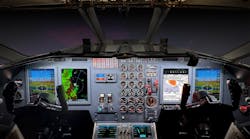Dec. 05--The Federal Aviation Administration is ordering airlines to inspect 787 Dreamliners for improperly installed fuel-line connectors that could result in leaks or even fires.
The safety directive, to be published Wednesday, gives airlines a week to check fuel-line system fastening wires and 21 days to check connectors inside the pylons that hold the engines.
Fuel leaks were reported by airlines on two in-service 787s, and subsequent inspections by Boeing of jets in service or still in production revealed some fuel line connectors were installed incorrectly.
Such leaks "could result in fuel leaks and consequent fuel exhaustion, engine power loss or shutdown, or leaks on hot engine parts that could lead to a fire," according to an FAA notice Tuesday in the Federal Register.
Boeing recommended such inspections to 787 customers on Nov. 25. The FAA airworthiness directive makes it mandatory.
"Certainly we would prefer not to have workmanship issues," said Boeing spokeswoman Lori Gunter. "But the system finds them, we report them and we develop a solution."
Gunter said the inspections have already been completed on about half the 38 airplanes delivered so far.
"Boeing is also taking appropriate steps to ensure proper installation on airplanes in production," Gunter said.
She would not disclose which two foreign airlines reported the original leaks.
The pylons are struts, attached at right angles to the front edge of the wing, that hold the engines. Inside the pylons, a complex spaghetti of electrical, hydraulic, pneumatic and fuel systems feed into the engine.
When the engines are hung at the jet's final stage of assembly, all these systems must be meticulously connected from pylon to engine.
Fuel is fed into the engine from gas tanks in the wings. Two key connectors, one rigid and one flexible, are installed to couple the fuel lines in the pylon with those in the engine.
In addition, a safety wire -- known as a lockwire -- is twisted between adjacent fasteners to ensure they do not loosen during service.
The FAA said inspections revealed "missing or improperly installed lockwire."
They also foundsome connectors with parts installed in the wrong locations, some with incorrect parts installed and some with extra parts installed.
Inspection of the connectors involves some disassembly, replacement of the o-rings, and checking of all the seals and retainer rings.
Without that, the FAA concluded "the unsafe condition ... is likely to exist or develop in other" 787s.
The FAA estimates that complying with the inspection mandate will take about 10 work hours at a cost of about $2,712 per airplane for parts and labor.
Gunter said there is no tie between the fuel leaks and the incident that caused an emergency landing Tuesday in New Orleans of a United Airlines Dreamliner.
The FAA airworthiness directive, first reported Tuesday by Bloomberg News, is the second that applies to the Dreamliner.
The first was issued in September when a fan shaft of the GE engine cracked during pre-delivery ground tests in South Carolina.
That directive requires repeated ultrasonic inspections of the engine shafts for potential cracks.
Dominic Gates: (206) 464-2963 or [email protected]
Copyright 2012 - The Seattle Times
